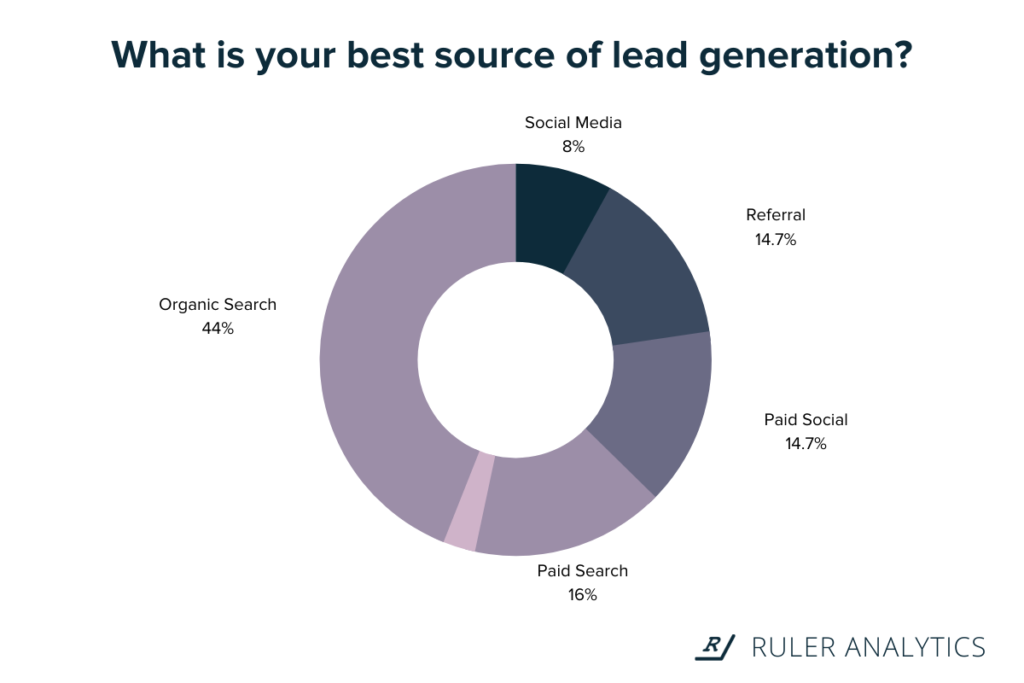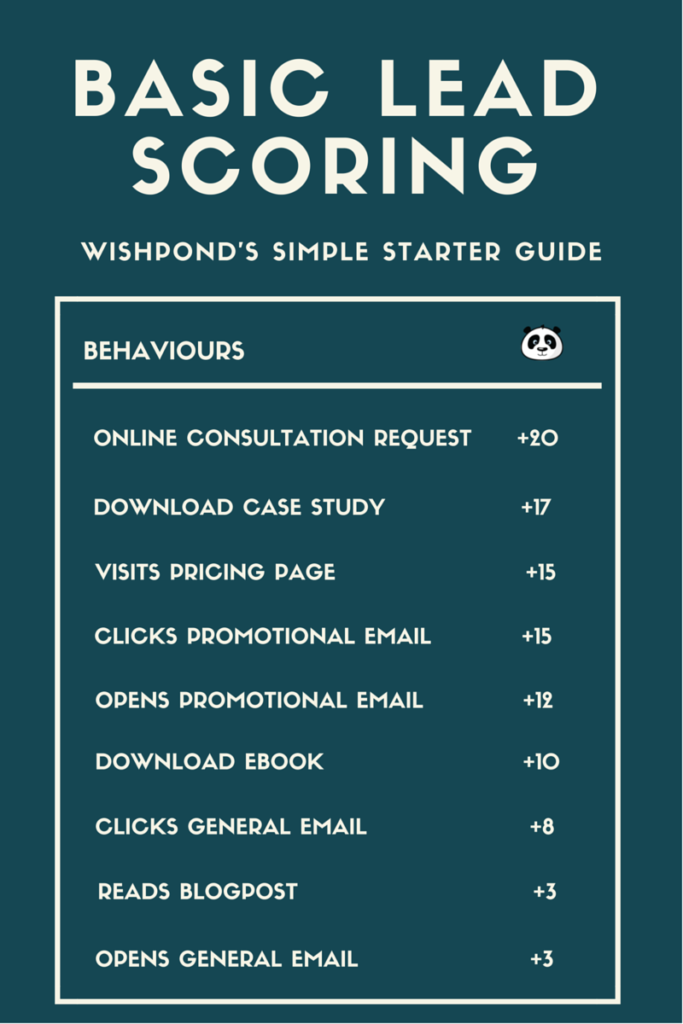Leads are information-seeking members of your target audience. More specifically, they’re people who are at the stage of wanting to learn more about your product. They aren’t entirely sold, but with help from sales and marketing teams, they can become loyal customers.
Businesses often miss out on potential customers like this due to poor lead-tracking efforts. So, let’s go through some lead-tracking tips to help you convert more leads.
But first…
What is lead tracking?
Lead tracking involves monitoring the activity of potential customers as they interact with your brand. Tracking should start from initial contact through the entire sales process. In a study, 91% of marketers said that lead generation is their most important goal.
Lead tracking can help you categorize leads. For example, an inbound lead is someone that contacted your company. An outbound lead is a customer that you reached out to. Such details allow you to build strategies for specific customer personas. For instance, an outbound lead requires more input from the marketing team, while an inbound lead can be fast-tracked to the sales team.
Lead tracking helps you identify your most efficient lead generation approaches, too. You will see patterns in what works best for converting leads into sales. What works best for you will depend on the demographic of your audience.
With the help of lead tracking, you can also identify high-value leads to target. You can pinpoint the leads most likely to be converted and implement specific strategies to shorten the sales cycle. For example, one of your leads could be another business. In that case, you can search a specific LLC to gather information about their company before trying to close a sale.
Additionally, lead tracking data can inform your sales and marketing operations. The information can fine-tune marketing efforts and guide future campaigns—your most efficient channels. Lead source data also enables you to evaluate the effectiveness of your marketing initiatives.
Five tips to help you track leads
Now that you know why lead tracking is so important, the question is, how exactly can you track leads? Let’s discuss five tips:
1. Identify KPIs
Identifying the most relevant key performance indicators (KPIs) is vital. There is a lot of data you can generate from your leads. This can be overwhelming. When you identify your KPIs, you can pick out the relevant information you can use for effective lead tracking.
That said, here are some primary KPIs that companies should track when monitoring leads:
- Traffic-to-lead ratio: This measures how effectively your marketing material converts traffic to leads.
- MQL-to-SQL ratio: A marketing qualified lead (MQL) has interacted with your marketing collateral but may not be interested in talking to a sales rep just yet. A sales-qualified lead (SQL) expresses interest in your offer and wants to speak to a sales rep. Knowing this ratio lets you gauge how well your marketing team moves down leads through the sales funnel.
- Time-to-conversion ratio: This measures how long it takes for a visitor to move through each stage of the sales pipeline. The shorter the time
- Monthly recurring revenue per lead, MQL, or SQL: This gives you an idea of the quality of your leads, MQLs or SQLs.
Financial metrics are also essential KPIs to track. Customer lifetime value (CLV) is used to project the revenue a customer will generate throughout their lifecycle. This allows you to plan your sales and marketing budget and focus on high-value leads.

It would help to track the cost of your sales and marketing campaigns. This can be done by calculating the Cost Per Acquisition formula below.

Tracking this metric allows you to project your Return on Investment. Determining the profitability of marketing campaigns is essential, so you’ll know if your lead tracking and other marketing efforts are working.
2. Specify potential lead sources
A lead source is a channel that brought a lead to you for the first time. Knowing this information allows you to determine the tools to monitor your leads.
Let’s look at some potential lead sources. Organic search traffic is an excellent place to start. You may think that paid ads would provide more high-quality leads. However, organic search allows you to target keywords that bring in highly qualified prospects.

In a survey of 30 sales and marketing experts, 44% said organic search was their best lead generation source. You can use organic lead data to match your content more closely to what they are looking for.
Here are other potential lead sources:
- Pay-Per-Click ads
- Email newsletters
- Events
- Traditional advertisements
- Cold calls
- Referrals
Although you can track your lead sources manually, this can be quite challenging. The best option is to use tools, which we’ll discuss in the next section.
At this stage, you must first identify your potential lead sources. The best way to go about this is to map out the customer journey so you can determine all your buyer’s initial potential touchpoints.
3. Choose the right tools and monitor leads
Once you’ve identified your potential lead sources, it’s time to invest in the right software that can help you track exactly where your leads come from. The tool/s you choose should be able to monitor all the potential lead sources you specified.
If you are new to lead tracking, it is worth investing in extensive software to give you as much help as possible. There are also many tools with specific features you can use for lead tracking.
You can, for instance, assign unique tracking links to all your campaigns that require driving clicks to your sites, like email, social media, and online ads. You can then see where your traffic is coming from through Google Analytics. Or instead hop into the new trend of server-side tracking which is a new approach to tracking data that does not rely on third parties Like Analytics or HubSpot. With this approach your user and website data is stored on a secure and centralized server and third parties cannot make use of the data. This will become a necessity as data regulations controls grow stiffer.
You can also use call tracking technology. This is done by assigning a unique tracking phone number to each marketing source. When a person calls a number, the call is routed to the call tracking platform, which collects digital data and ties back the call to the caller’s previous activity on the site.
You can also use a lead scoring tool like the one above to see what your leads do on your site. Intelligent routing software, such as RouteSmart, helps to keep leads moving through the sales pipeline smoothly.
Website heat maps are also great for monitoring customers’ interaction with your website.
4. Analyze data and act on it
However, choosing the right tools and gathering data will not provide you with the full benefits of lead tracking. To generate actionable advice, you need to analyze the data you get from your tools.
For example, your lead tracking software may identify a decrease in your call-to-action click-through rate. So, to figure out what you can do to change this, you can check your website heat map.
If you see that a portion of your website is getting a lot of attention from your leads, you will transfer your CTA there instead.
You can also use this clickthrough data and data from website heat maps for effective terminology management that helps increase conversions. For instance, if you have a low CTA clickthrough rate on a page, you can check your heat maps of other pages to see which CTAs get your leads’ attention. You’d do away with the CTA that doesn’t generate results and keep the one that works.
If you view all your data from call and UTM tracking, you can also determine which platforms generate the most leads for you and double down on those.
5. Share data with other departments
You should share your lead tracking data with other departments within your business. Lead tracking data, after all, provides excellent insights for many departments in a company. Overall, sharing data can help the company with conversions.
For example, data like click-through rates and website heat maps should be shared with those responsible for web design. This will help ensure the team comes up with a site that converts.
Data from website heat maps can also be shared with the sales team. For instance, if the sales team knows that website visitors frequent specific product feature information on a page, they can lead with that information when talking to potential customers about the product. This can help increase their chances of converting the potential customer.
Similarly, data from other departments can be beneficial for lead generation and conversion.
For instance, information from the customer service department about customers’ most frequent problems can help guide future marketing and sales campaigns.
You can use tools similar to progress tracking platforms used by engineering teams to facilitate this data-sharing.
In closing
Lead tracking should be an integral part of your overall marketing strategy. When utilized fully, lead tracking provides numerous benefits.
But you need to perform lead tracking the right way.
You will need to identify the correct KPIs for your business and determine the potential sources of your leads. Only then can you determine the right software to track these potential sources. Also, analyze the data you get from your tools to generate actionable advice. Share your lead tracking information with other departments, too.
If you follow these tips, you and your business, as a whole, can increase your chances for conversions. Get tracking!
Author’s Bio: Jon is the founder of two successful e-commerce and SaaS businesses. He’s passionate about sharing what he has learned from working with business owners through Venture Smarter.





